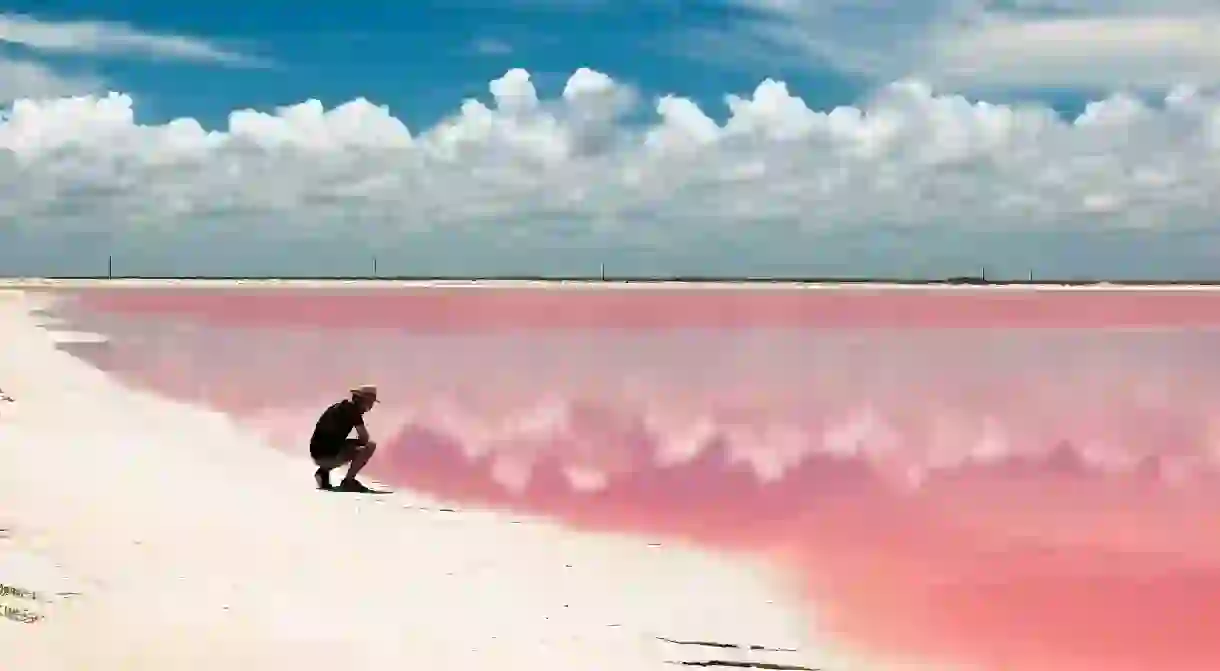Las Coloradas: A Guide to Mexico’s Magical Pink Lagoon

Mexico’s magical pink lagoon was once one of the country’s best and most beautiful hidden secrets, but with an influx of Instagram influencers publishing photos of this almost unbelievable destination in recent times, more and more people are aware of Las Coloradas’ existence. Here’s everything you need to know about the dazzlingly rose-hued waters of Yucatán’s salty pink lakes.
History
Before becoming the ‘it destination’ of the travel bloggerati, Las Coloradas was just a sleepy fishing village on the Yucatán coast with a penchant for salt production that dated back to the Mayan period. The Mayans were the first to discover that the village was ideally situated for salt production, as a result of the flat salt plains that surrounded the nearby mangroves. When salty sea water washes in, it settles on the hard ground and from there the sun does the leg work of dissolving the water, leaving behind plenty of the sought-after seasoning that was such a commodity for the Mayans, who used it for both preservation and trading. Nowadays, the salt plains are artificially constructed, but the process remains much the same, albeit on a grander scale. In fact, Las Coloradas, tiny though it may be, is home of the Yucatán’s most stable industries.

But what about that pink colour? Well, that comes from the algae, plankton and brine shrimp that reside in the waters of Las Coloradas and become visible as the water evaporates under the beating Mexican sun. Incidentally, eating these creatures is the reason why flamingos (which can sometimes be found roaming the water’s edge) are pink!

Visiting Las Coloradas
Las Coloradas is the name applied both to the lakes themselves, as well as the surrounding beach and tiny fishing village; Río Lagartos is the closest town to this fascinating destination, some 30 minutes away. There are a handful of dining and accommodation options in the latter, which makes it the ideal (and most popular) option should you choose to stay overnight when visiting these salty lagoons on the northern tip of the Yucatán peninsula. Alternatively, you can visit the lagoons in a day trip from the nearby cities of Cancún and Playa del Carmen (the trip is around 2 hours by car each way), or you can drive three hours from either Mérida or Valladolid, Yucatán if you wish. There are plenty of tour companies that make stops at Las Coloradas if you’re not feeling in a DIY mood though.

Unfortunately, although the pools around the salt factory used to be open for swimming (despite only being a couple of feet deep), recent changes mean visitors can now only paddle in the water or wander round the edge of the factory lakes. If you’re really dying to take a dip though, some tours take you to pink lakes in a slightly different location where you can get your paddling fill. Be warned that the extreme salt content of the water will sting if you have open cuts or shaved your legs the night before!

While you’re in the area, take the opportunity to also explore some of the region’s virgin beaches and dunes, snap photos of the towering piles of pure white salt surrounding the Las Coloradas factory, and enjoy the flora and fauna of the Río Lagartos Biosphere Reserve in which these magnificent pink lakes are found.














